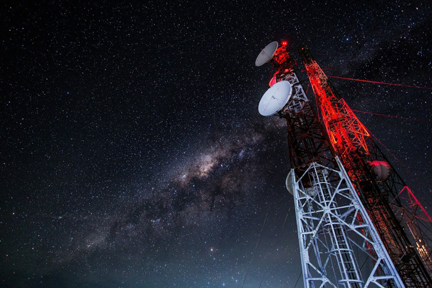Dave Clark | Oct 31, 2018 | CWC Blog
NEED WEBINAR HELP?
In the early days of webinars, hosts and presenters routinely stumbled through their events, fumbling with the technology, making technical errors, and blundering through their presentations. With no template or guidebook on how a professional webinar should be conducted, people did their best to try to figure it out as they went along.
But several decades after the advent of webinars as a means to inform, market, and educate, it's astonishing how many webinars are still poorly executed. Many webinars, promoted ostensibly as professional showcases of a company's products or services or an organization's thought leadership, turn out to be little more than disorganized teleconferences or videoconferences with some hastily prepared presentation slides.
The underlying problem is simple. Most companies and organizations don't think of their webinars as broadcasts.
When you're watching a live TV news program or listening to a radio call-in show, you instinctively know that there are other people involved behind the scenes. The anchors and hosts didn't show up at an empty studio that morning with the expectation that they would broadcast themselves with no assistance. Necessarily, there are producers directing the show and technicians operating the equipment. Why should your webinars be any different?
Hosting a webinar is certainly easier than producing an actual radio or TV show, with technology and equipment that's accessible and affordable to just about anyone. But there are still numerous technical and logistical details to consider and countless things that can go wrong. Just like a live network newscast or even a professionally-produced online TV-style webcast has producers and support staff providing direction to the on-air talent and operating the equipment, your webinars require similar orchestration.
At the very least, every webinar should have somebody behind the scenes to run the webinar software, help attendees with technical problems, and manage the Q&A process. With this burden lifted off the presenters, they can concentrate exclusively on what they do best: present. Taking it a step further, those webinar organizers who understand the importance of thinking of their webinars as broadcasts assign a dedicated webinar producer to run the show—somebody who fully understands the webinar technology and webinar best practices, and who can ensure that everything runs as smoothly as possible during the event.
Your lead generation webinars are a very public-facing part of your marketing and outreach, arguably the longest continuous touchpoint you'll have with any customer or prospect. On the other hand, if you're a media or education organization, your webinars might very well be your business. Every time you host a webinar, you're putting your image and reputation on the line. It puzzles me how companies can spend a veritable fortune on other forms of marketing and branding, hiring expensive PR firms and advertising agencies, and never even consider making a comparably tiny investment in their webinar program. Instead, they give the keys to the kingdom to their webinar presenters and tell them to go it alone. Can you really afford to invite your customers and prospects to a webinar featuring technical glitches, unprepared presenters, and sometimes even major crash-and-burn technical malfunctions? What does that say about your business?
There's too much at stake not to reconsider what a webinar really is. Only when you start thinking of your webinars as broadcasts—deploying the necessary support staff and making use of a webinar producer—can they make the evolutionary leap from the amateur hours of yesterday to the professionally-produced events possible today. That's what your audiences expect and it's what your bottom line requires.
Clark Webinar Consulting provides expert webinar production, consulting, and support services to help businesses, nonprofits, and individuals run successful webinars and virtual events. For over 10 years, we've helped hundreds of organizations conduct thousands of stress-free, professional webinars. Learn more about our full range of webinar services.